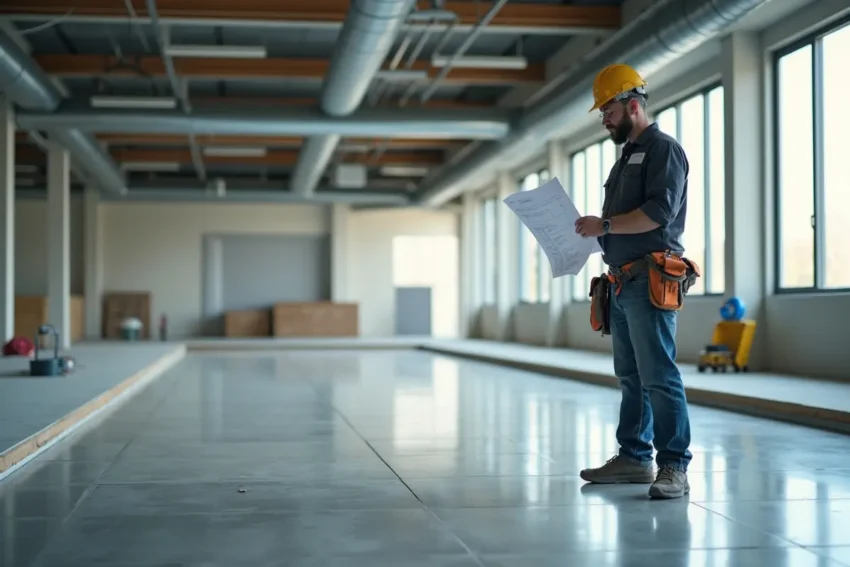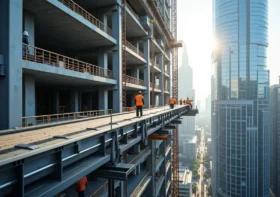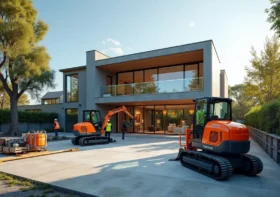Common Mistakes to Avoid in Commercial Floor Installation

Flooring is one of the most important aspects of any commercial property. It sets the tone for the environment, influences safety, and directly impacts how clients and employees perceive a space.
A well-installed floor can last for decades, but mistakes during installation can lead to costly repairs, reduced durability, and even safety hazards. Understanding the most common pitfalls helps businesses ensure their investment in flooring is both functional and long-lasting.
Contents
Choosing the Wrong Materials
One of the most frequent mistakes in commercial floor installation is selecting materials that don’t align with the building’s usage needs. A high-traffic office lobby requires different flooring than a restaurant kitchen or a medical facility.
When businesses overlook these distinctions, the result can be premature wear, frequent maintenance, or even regulatory compliance issues. Relying on professionals who provide commercial flooring services helps avoid this error. Experts can recommend the right flooring based on durability, slip resistance, ease of cleaning, and aesthetic considerations. Cutting corners with unsuitable materials may save money upfront, but often leads to higher expenses in the long run.
Inadequate Subfloor Preparation
Even the best flooring materials won’t perform well if the foundation beneath them isn’t properly prepared. Uneven, damp, or dirty subfloors are a common source of installation problems. Moisture, in particular, can cause adhesives to fail or lead to mold growth under the flooring.
Proper subfloor preparation includes cleaning, leveling, and moisture testing before installation begins. Skipping these steps often results in floors that buckle, crack, or shift prematurely. A strong, stable base is important for ensuring that commercial floors last as intended.
Poor Planning and Measurement
Another mistake is failing to plan adequately for the installation process. Incorrect measurements can lead to ordering too much or too little material, causing unnecessary costs or delays. Not accounting for features such as columns, stairs, or angled walls can create awkward seams and gaps that detract from the finished appearance.
Successful commercial flooring projects begin with detailed assessments and precise measurements. Taking the time to plan layout patterns, transitions between different materials, and traffic flow ensures that the final product looks professional and performs as expected.
Neglecting Acclimation of Materials
Flooring materials often need time to adjust to the temperature and humidity of the installation site. Ignoring this step, known as acclimation, can cause significant problems once the flooring is in place. Wood and laminate floors may expand or contract, leading to gaps or buckling.
Allowing materials to acclimate in the space for the recommended period reduces these risks. This step is critical in environments with fluctuating temperatures, such as warehouses or entryways exposed to the outdoors. Overlooking acclimation is a small oversight that can create big problems later.
Overlooking Safety and Compliance Standards
Commercial floors must do more than look attractive, they must meet safety and compliance requirements. Failing to prioritize these standards can create costly risks. Common oversights include:
- Using non-slip-resistant materials – Dangerous in kitchens, bathrooms, and healthcare settings where spills are common
- Ignoring fire safety regulations – Certain materials may not meet flame-spread ratings required by building codes
- Overlooking hygiene requirements – In medical, food service, or childcare facilities, flooring must resist bacteria and be easy to sanitize
- Failing to ensure accessibility – Improper transitions or uneven flooring can create hazards for individuals with mobility challenges
Working with knowledgeable contractors ensures that flooring choices align with industry-specific safety standards. This protects employees and customers and safeguards the business from liability issues.
Rushing the Installation Process
In commercial environments, time is often money, but rushing flooring installation rarely pays off. Skipping steps, using shortcuts, or allowing insufficient drying or curing time can compromise the integrity of the floor. Adhesives may not set correctly, finishes may be uneven, and the lifespan of the floor can be dramatically shortened.
A thoughtful installation schedule that allows for proper preparation and curing ensures higher quality results. Businesses benefit from floors that last longer, require fewer repairs, and reflect the professionalism of the company.
Ignoring Maintenance Requirements
Businesses sometimes view flooring as a one-time investment, forgetting that maintenance is important for longevity. Even durable commercial floors need regular cleaning and upkeep to maintain their appearance and performance. Using the wrong cleaning products or neglecting routine maintenance can quickly undo the benefits of a professional installation.
Before choosing a flooring material, businesses should consider its ongoing care needs. Establishing a maintenance plan from the start preserves the floor’s look and extends its functional life.
Commercial flooring is a major investment that influences safety, aesthetics, and day-to-day functionality. Mistakes such as choosing the wrong materials, neglecting subfloor preparation, or rushing the installation process can undermine the entire project. Partnering with experts in flooring services helps businesses avoid these pitfalls, ensuring that their floors are durable, compliant, and attractive.



